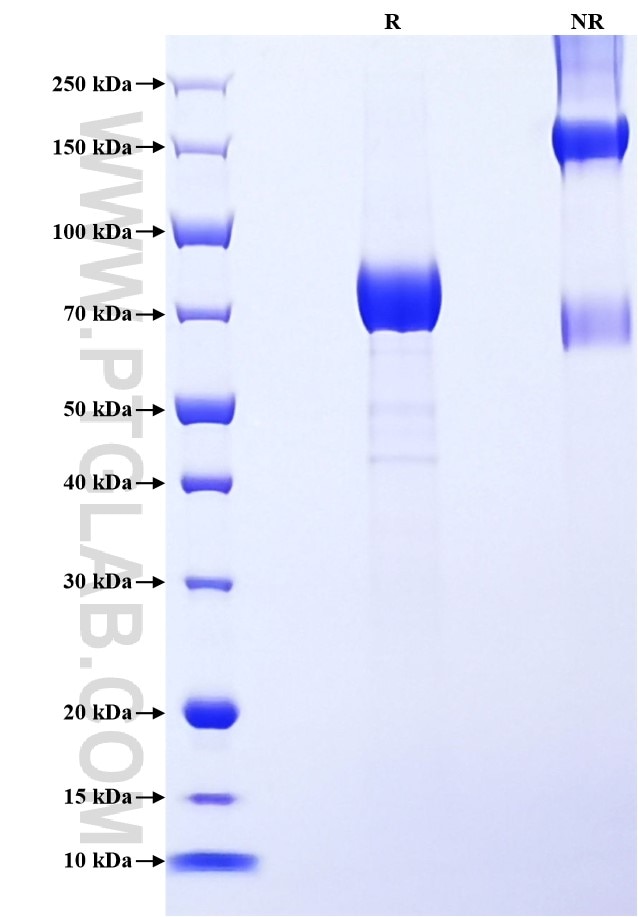Recombinant Human IL-3RA/CD123 protein (rFc Tag)
Species
Human
Purity
>90 %, SDS-PAGE
Tag
rFc Tag
Activity
not tested
Cat no : Eg2013
Validation Data Gallery
Product Information
| Purity | >90 %, SDS-PAGE |
| Endotoxin | <0.1 EU/μg protein, LAL method |
| Activity |
Not tested |
| Expression | HEK293-derived Human IL-3RA protein Thr19-Arg305 (Accession# P26951-1) with a rabbit IgG Fc tag at the C-terminus. |
| GeneID | 3563 |
| Accession | P26951-1 |
| PredictedSize | 59.4 kDa |
| SDS-PAGE | 68-85 kDa, reducing (R) conditions |
| Formulation | Lyophilized from 0.22 μm filtered solution in PBS, pH 7.4. Normally 5% trehalose and 5% mannitol are added as protectants before lyophilization. |
| Reconstitution | Briefly centrifuge the tube before opening. Reconstitute at 0.1-0.5 mg/mL in sterile water. |
| Storage Conditions |
It is recommended that the protein be aliquoted for optimal storage. Avoid repeated freeze-thaw cycles.
|
| Shipping | The product is shipped at ambient temperature. Upon receipt, store it immediately at the recommended temperature. |
Background
Interleukin-3 receptor subunit alpha (IL-3R alpha), also known as CD123, belongs to the cytokine receptor family. It is a glycoprotein containing an extracellular domain, involving a predicted Ig-like domain, two FnIII domains, a transmembrane domain and an intracellular domain. IL-3R alpha is expressed on hematopoietic progenitor cells, plasmacytoid dendritic cells, basophils, monocytes, some B cells, and in a variety of hematologic malignancies. IL-3 initially binds to IL-3R alpha and subsequently recruits the beta chain (CD131) to form the high-affinity receptor, resulting in the activation of a series of signaling pathways including the JAK/STAT, Ras-MAPK, and phosphatidylinositol 3-kinase pathways (PMID: 29296749). IL-3R signaling regulates the proliferation, survival, and differentiation of hematopoietic cells.
References:
1. S Huang, et al. (1999). Stem Cells. 17(5):265-72. 2. Ugo Testa, et al. (2014). Biomark Res. 2(1):4. 3. Nicole L Wittwer, et al. (2017). Blood Adv. 1(15):1067-1079. 4. Adam J Lamble, et al. (2022). J Clin Oncol. 40(3):252-261.
